Idea by
Jason Slabbynck & Benjamien Lycke
Studio mxmxm
Call for ideas 2020
Arc De L’Europe
Arc De L’Europe
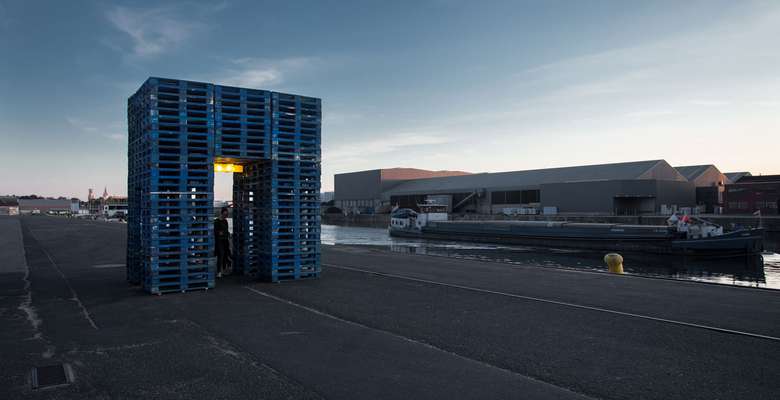
- New alliances
Arc de l’Europe, a triumphal arch consisting of blue Euro-pallets, is the result of a search for a supranational symbol that is able to embody the functioning of the European Union. As the works of Sol Lewitt, Arc de l’Europe is first and foremost a concept. Studio mxmxm defined the material, the construction process, the form and the scale of an installation that can be build – and broken down – anywhere in Europe. Benjamien Lycke wrote the manual of a performance that can take place underneath and around this installation. The first realization of Arc de l’Europe took place at Bruges port as part of the art festival KONVOOI.
This installation is an attempt to visualize structures that often feel invisible, inaccessible and far away but are actually very present and essential in our everyday life. But also reflect on the European project in both its triumphs and downfall in a poetic way that resonates with the audience.
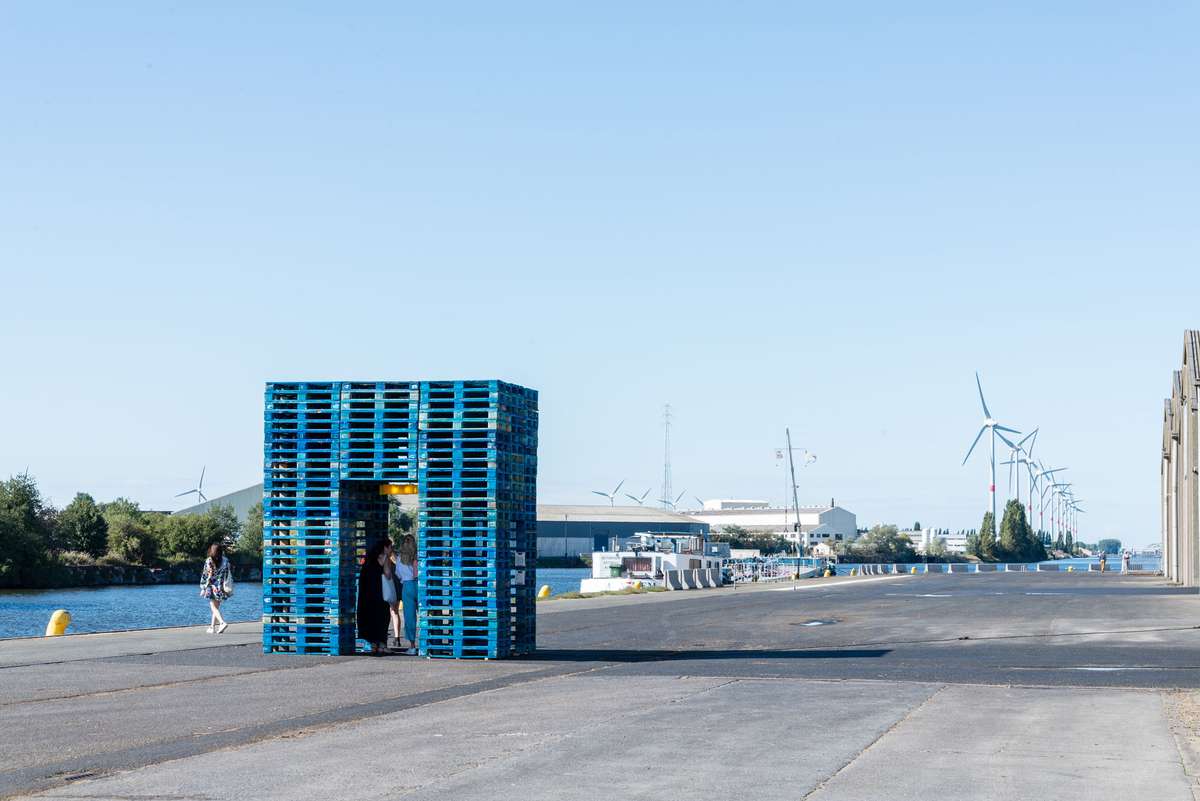
Arc de L’Europe is entirely made of Euro-pallets. Its shape is a re-enactment of the well-known Parisian ‘Arc de Triomphe’, but twelve times smaller. To realize the sculpture, a total of 170 Euro-pallets are needed. Since pallets have a deposit value, they can be borrowed from a freight company and returned afterwards. In this way both the ecological footprint and the cost of the sculpture remains minimal.
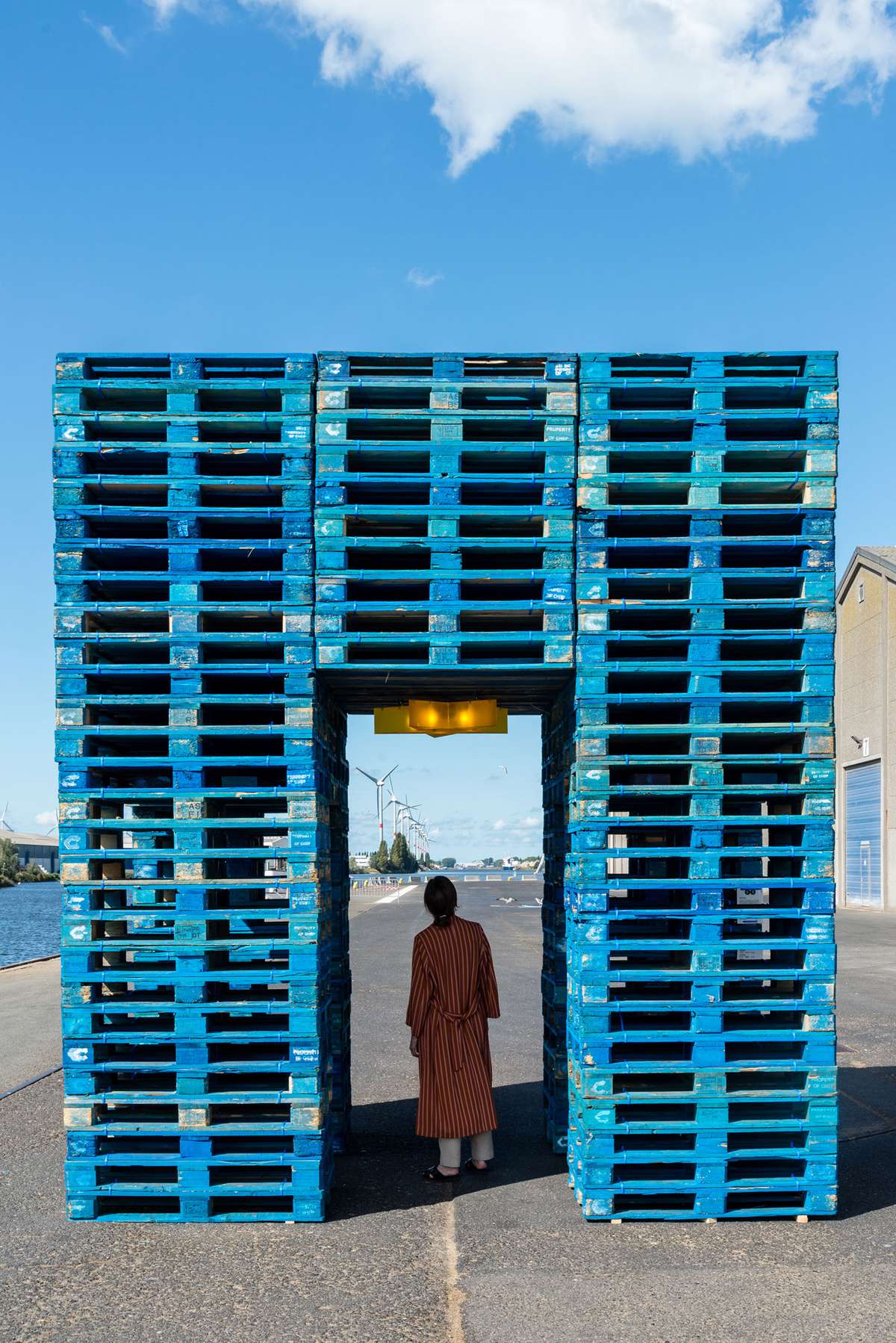
A Euro-pallet is a wooden pallet with dimensions and specifications laid down by the European Pallet Association. Euro-pallets circulate in an exchange system set up by the European railway companies in the mid-twentieth century. In a broader perspective, Euro-pallets are the perfect symbols for the European project: imposed by a bureaucratic apparatus, the standardization makes it possible to move goods easily between different nations and thus to cooperate better.
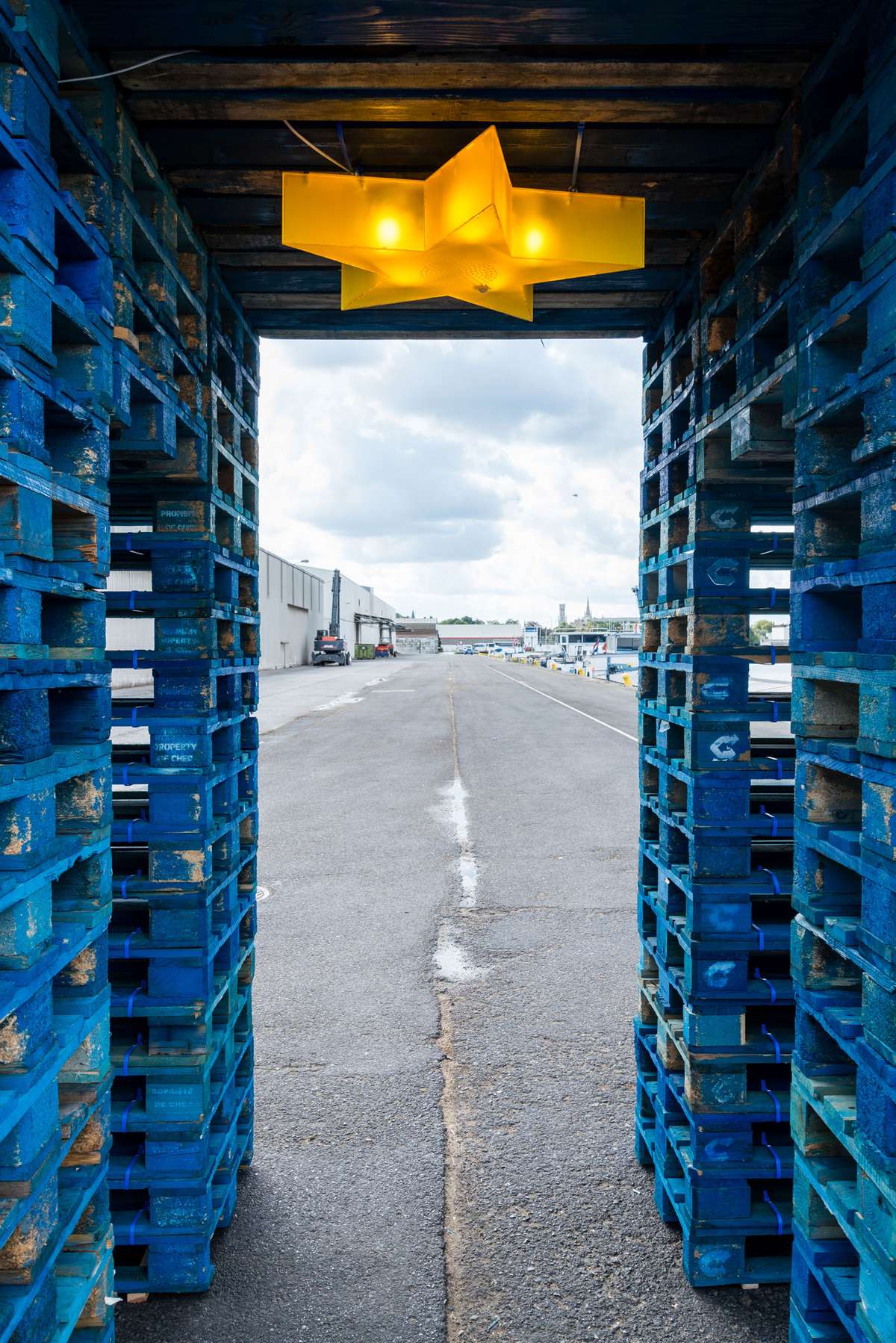
At times when there are no performances, people can discover a yellow star underneath the arch which is able to track the movement of visitors going through the arch and can start playing an 8-bit version of the European anthem. The yellow star acts as a keystone of the physical installation, as well as of the performance. The materiality of the plastic and the quality of the sound stood out against the rough aesthetics of the wooden re-usable pallets and the musical finesse of the performance.
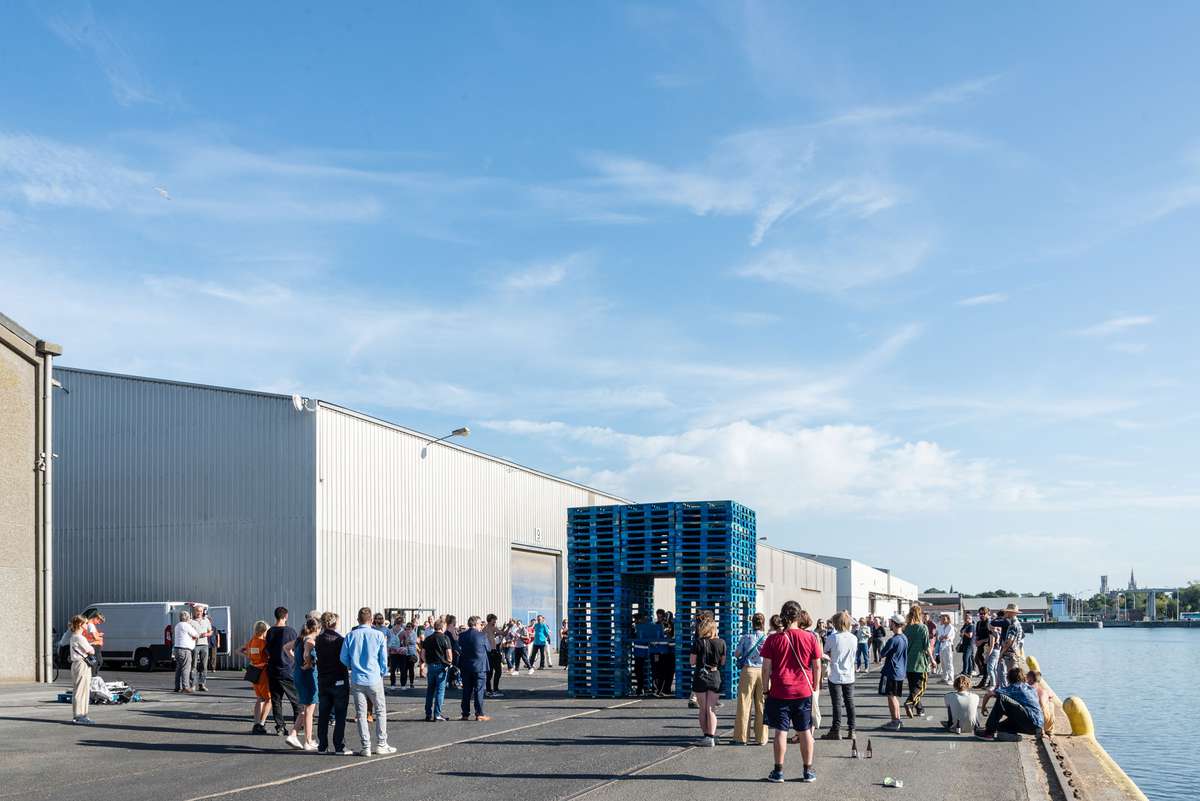
Arc de l’Europe, was more than a silent evocation of Europe’s achievements: it also talked to passers-by through a couple of music performances which took place under the triumphal arch. Since 1985, the European Community has the prelude to Ode to Joy, the fourth movement of Ludwig van Beethoven’s Ninth Symphony as is official anthem. The fourth movement was originally written for orchestra, large choir and four soloists.
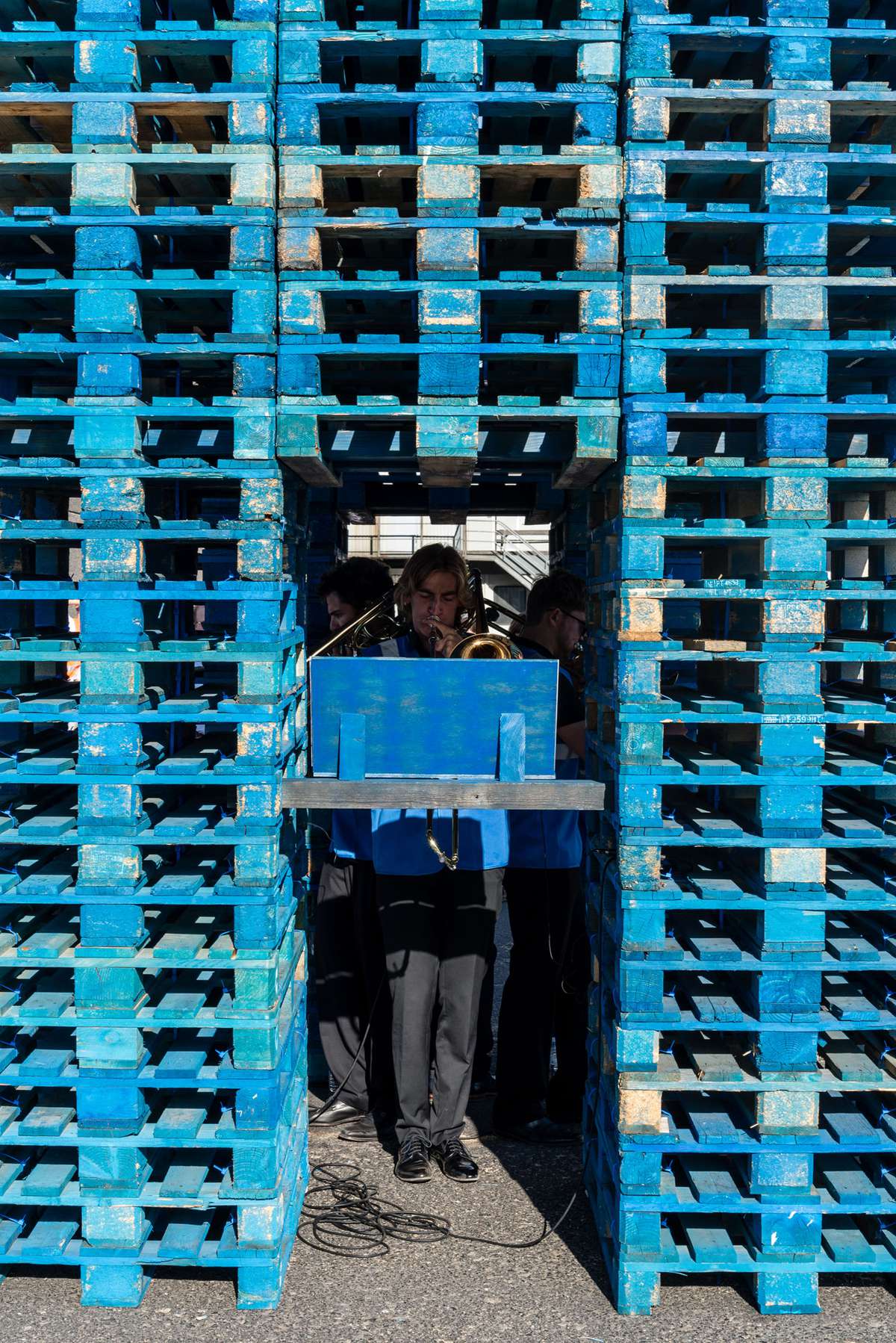
Every day the arrangement of the musicians changed, playing a new layer on top of the recorded version of the previous day. In this sense adding an ‘added value’ to the previous version, just like ‘goods’ that get an ‘added value’ when they pass through the port. Automation is something Europe is inevitably confronted with, in ports specifically and in labor in the general sense. Automation questions the place of humans in the (creative) process of making and transporting ‘goods’.
Arc De L’Europe
Arc De L’Europe

- New alliances
Arc de l’Europe, a triumphal arch consisting of blue Euro-pallets, is the result of a search for a supranational symbol that is able to embody the functioning of the European Union. As the works of Sol Lewitt, Arc de l’Europe is first and foremost a concept. Studio mxmxm defined the material, the construction process, the form and the scale of an installation that can be build – and broken down – anywhere in Europe. Benjamien Lycke wrote the manual of a performance that can take place underneath and around this installation. The first realization of Arc de l’Europe took place at Bruges port as part of the art festival KONVOOI.
This installation is an attempt to visualize structures that often feel invisible, inaccessible and far away but are actually very present and essential in our everyday life. But also reflect on the European project in both its triumphs and downfall in a poetic way that resonates with the audience.
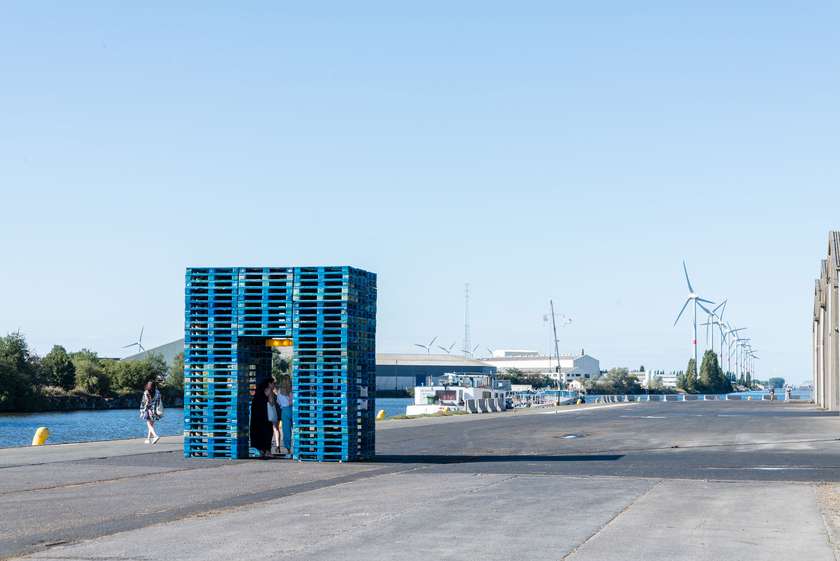
Arc de L’Europe is entirely made of Euro-pallets. Its shape is a re-enactment of the well-known Parisian ‘Arc de Triomphe’, but twelve times smaller. To realize the sculpture, a total of 170 Euro-pallets are needed. Since pallets have a deposit value, they can be borrowed from a freight company and returned afterwards. In this way both the ecological footprint and the cost of the sculpture remains minimal.

A Euro-pallet is a wooden pallet with dimensions and specifications laid down by the European Pallet Association. Euro-pallets circulate in an exchange system set up by the European railway companies in the mid-twentieth century. In a broader perspective, Euro-pallets are the perfect symbols for the European project: imposed by a bureaucratic apparatus, the standardization makes it possible to move goods easily between different nations and thus to cooperate better.
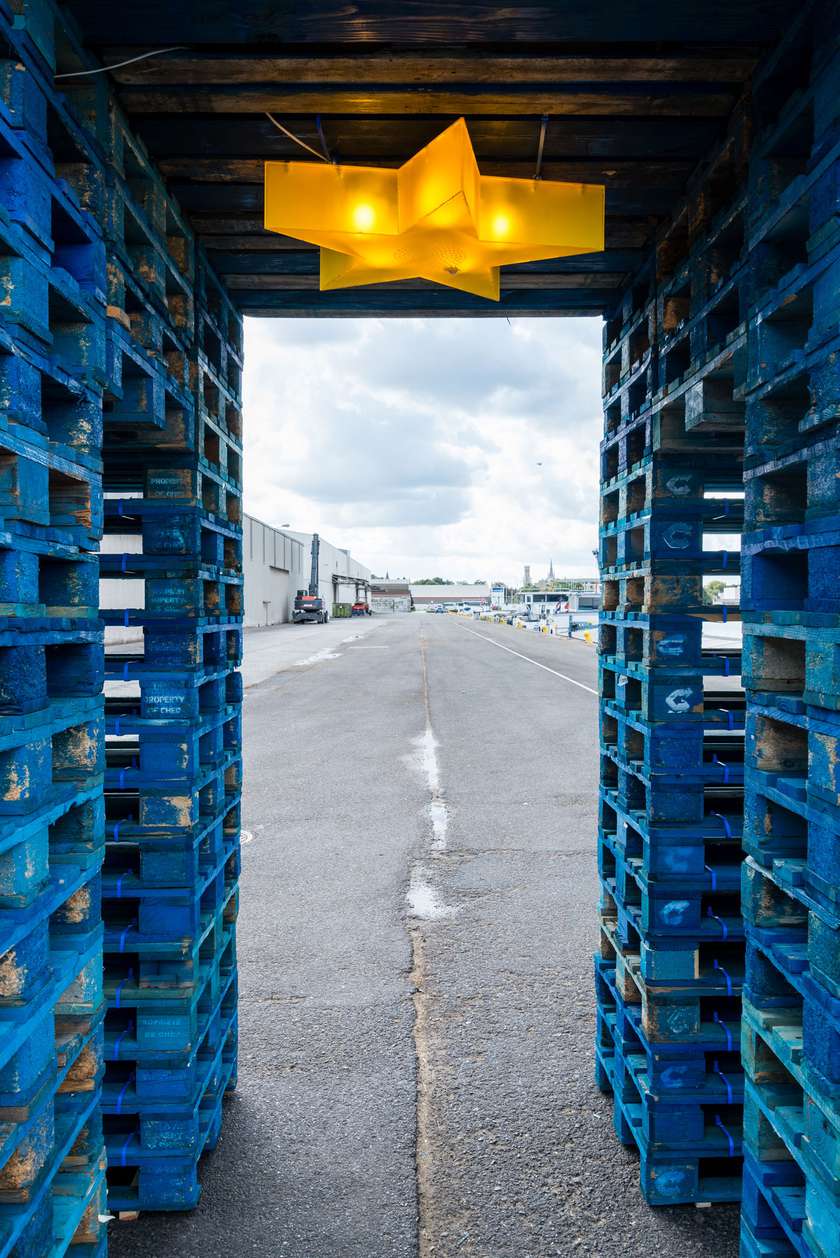
At times when there are no performances, people can discover a yellow star underneath the arch which is able to track the movement of visitors going through the arch and can start playing an 8-bit version of the European anthem. The yellow star acts as a keystone of the physical installation, as well as of the performance. The materiality of the plastic and the quality of the sound stood out against the rough aesthetics of the wooden re-usable pallets and the musical finesse of the performance.
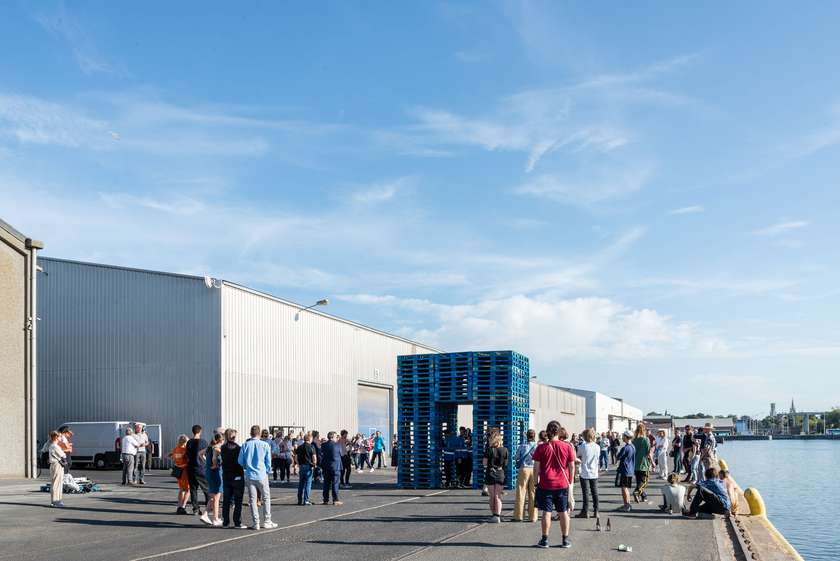
Arc de l’Europe, was more than a silent evocation of Europe’s achievements: it also talked to passers-by through a couple of music performances which took place under the triumphal arch. Since 1985, the European Community has the prelude to Ode to Joy, the fourth movement of Ludwig van Beethoven’s Ninth Symphony as is official anthem. The fourth movement was originally written for orchestra, large choir and four soloists.
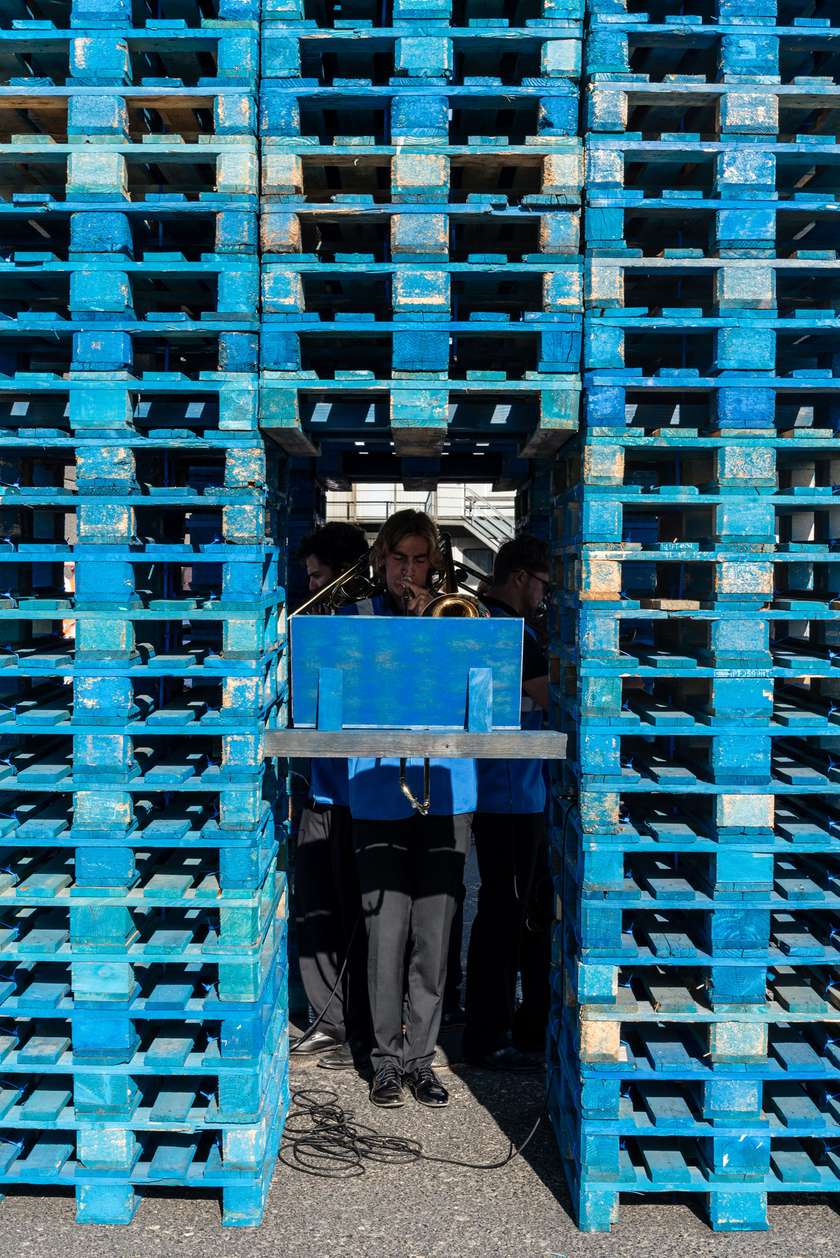
Every day the arrangement of the musicians changed, playing a new layer on top of the recorded version of the previous day. In this sense adding an ‘added value’ to the previous version, just like ‘goods’ that get an ‘added value’ when they pass through the port. Automation is something Europe is inevitably confronted with, in ports specifically and in labor in the general sense. Automation questions the place of humans in the (creative) process of making and transporting ‘goods’.